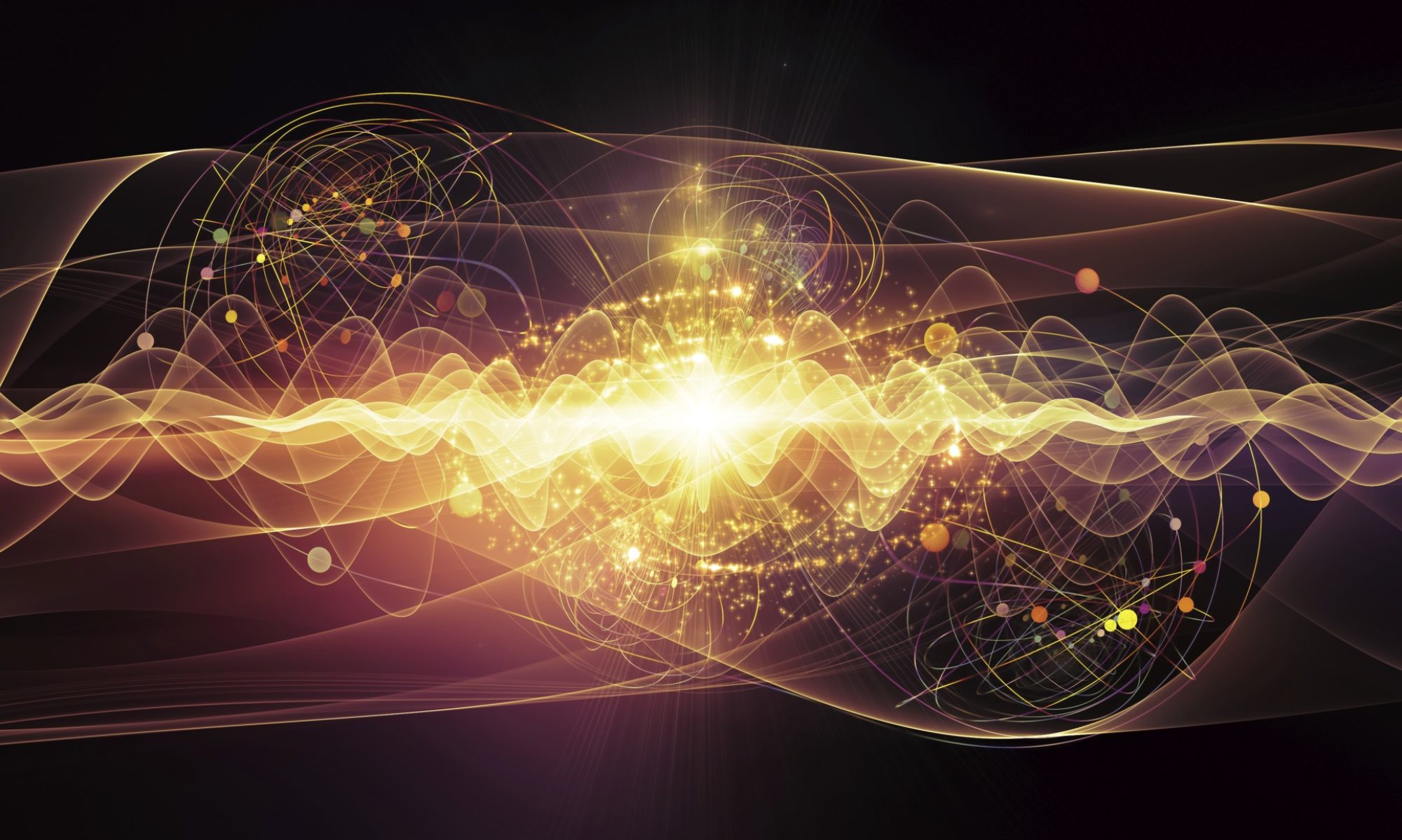This Valentine’s Day, we celebrate not only the power of love but also the incredible synergy between some of the most remarkable couples in physics. Their partnerships, both personal and professional, have driven groundbreaking discoveries and left an indelible mark on the field. Here are seven stories of love, collaboration, and scientific triumph.
Marie Curie and Pierre Curie: pioneers of Radioactivity
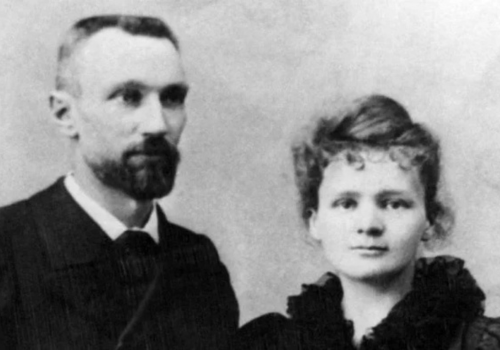
When talking about couples in science, one relationship that never goes unnoticed is that of Pierre Curie and Marie Curie. In their Parisian laboratory, surrounded by beakers and radiation detectors, they embarked on research that would change history forever.
They met in 1894 when Marie, a Polish physicist, moved to Paris to continue her studies. Pierre, already an accomplished scientist, was captivated by her intelligence and passion for research. They married in 1895, forming a partnership that redefined Physics and Chemistry. Together, they pioneered research on radioactivity—a term coined by Marie. Pierre’s expertise in crystallography and magnetism complemented Marie’s meticulous experimental skills, making their collaboration highly productive.
Their landmark discovery of polonium and radium in 1898 earned them the 1903 Nobel Prize in Physics, shared with Henri Becquerel. Initially, the Nobel committee intended to honor only Pierre and Becquerel, but upon learning of this, Pierre insisted that Marie’s contributions be recognized, leading to her inclusion in the award. Despite societal biases against women in science, Pierre’s steadfast support for Marie’s career exemplified their profound personal and intellectual bond.
Tragically, Pierre died in 1906, leaving Marie to continue their work alone. Undeterred, she went on to win a second Nobel Prize in Chemistry in 1911, cementing their legacy. The Curies’ love story was not just romantic but scientific. Pierre’s quiet determination, Marie’s relentless pursuit of knowledge, and their extraordinary collaboration revolutionized modern physics and medicine.
Irène Joliot-Curie and Frédéric Joliot-Curie: continuing the legacy
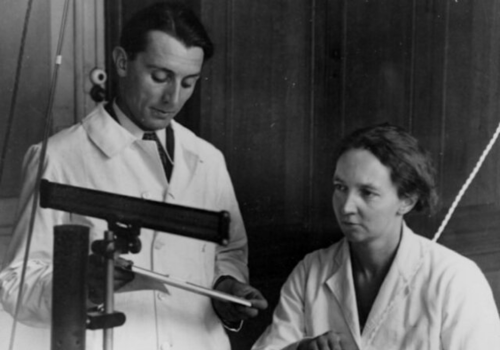
The great partnership of the Curies set the tone for their daughter, Irène Joliot-Curie, who grew up in the shadow of two legendary scientists but carved her own path in physics. While working at the Radium Institute in Paris, she met Frédéric Joliot, a fellow researcher with a passion for nuclear chemistry. They married in 1926, building a partnership rooted in shared intellectual curiosity and mutual respect.
The Joliot-Curies won the 1935 Nobel Prize in Chemistry for discovering artificial radioactivity. By bombarding light elements with alpha particles, they created radioactive isotopes, correctly identifying positron emissions as evidence of newly formed isotopes. Their work transformed the production of radioactive elements, making them accessible and inexpensive, with immense applications in biomedical research and cancer treatment.
Their marriage mirrored the collaboration and equality Irène had seen in her parents, blending scientific achievement with shared values. Beyond the lab, they were politically active, advocating for the responsible use of nuclear energy and resisting fascism during the 1930s and 1940s. Their ideals and activism strengthened their bond, making them pioneers not only in science but also in social change. Their legacy endures in both physics and the medical advancements their discoveries made possible.
Tatyana Afanasyeva and Paul Ehrenfest: bridging Physics and Mathematics
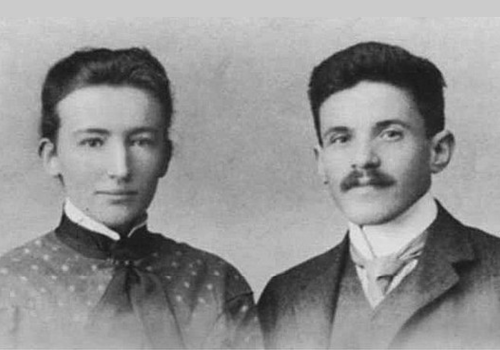
Tatiana Afanasyeva, born in 1876 in Kyiv, pursued her education in St. Petersburg before transferring to the University of Göttingen in Germany, a hub for mathematics and physics. There, she met Austrian physicist Paul Ehrenfest, forming a partnership that deeply influenced their careers.
Married in 1904, the couple renounced their respective religions—Tatiana Russian Orthodox and Paul Jewish—due to legal constraints regarding interfaith marriages. Their collaboration extended into academic work, notably co-authoring The Conceptual Foundations of the Statistical Approach in Mechanics (1911), which clarified Ludwig Boltzmann’s work and laid the groundwork for future research.
In 1912, Paul succeeded Hendrik Lorentz as a professor at the University of Leiden, where their home became a center for scientific exchange with figures like Albert Einstein. Over two decades, Paul made key contributions to physics, including the theory of adiabatic invariants, the Ehrenfest theorem (linking quantum and classical mechanics), a classification of phase transitions, and the Ehrenfest paradox in special relativity. Tatiana was equally impactful, advancing the mathematical foundations of thermodynamics and emphasizing precise definitions for key concepts like pressure, temperature, and entropy. Her work culminated in the 1956 publication Die Grundlagen der Thermodynamik. She also contributed to dimensional analysis and advocated for better mathematics education.
The Dutch Physics Council honors their legacy through the Ehrenfest-Afanasyeva Thesis Award, recognizing outstanding physics research and celebrating their lasting contributions to modern physics and mathematics.
Maria Fidecaro and Giuseppe Fidecaro: founders of CERN’s Legacy
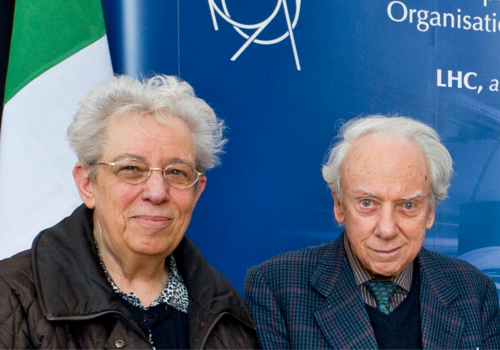
Maria Fidecaro (née Cervasi) and Giuseppe Fidecaro were integral to the early development of CERN. They met in Rome during their studies and, between 1952 and 1954, conducted cosmic ray experiments at the Tête Grise laboratory. In 1954, they moved to the University of Liverpool to further their research on particle decay, supported by fellowships—Giuseppe from CERN and Maria from the International Federation of University Women. They married in 1955 and soon joined CERN in Geneva, becoming part of its pioneering team while the laboratory was still under construction.
Giuseppe prepared experiments for CERN’s first accelerator, the 600 MeV Synchrocyclotron, which began operating in 1957. Inspired by Richard Feynman’s “V–A” theory of weak interactions, he led a team to study pion decay, confirming the theory in 1958 through 40 observed events, a breakthrough that brought CERN international acclaim. Maria developed techniques for producing polarized proton beams and co-authored nearly 200 publications on nucleon-nucleon scattering, high-energy electrodynamics, and proton-proton elastic scattering. She also made significant contributions to the CPLEAR experiment, which explored CP, T, and CPT symmetry violations in neutral kaon systems.
Together, the Fidecaros contributed to CERN’s establishment as a global leader in physics. Beyond their scientific achievements, they dedicated themselves to preserving CERN’s history and mentoring future generations, exemplifying a shared commitment to science and education.
Andrei Linde and Renata Kallosh: exploring the Early Universe
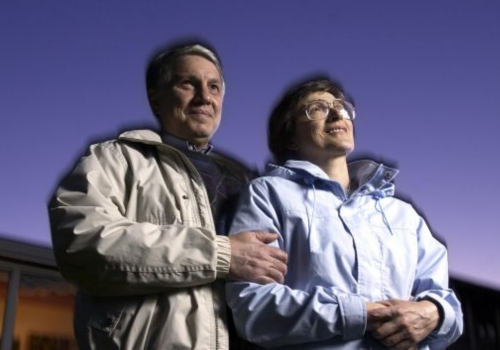
Andrei Linde and Renata Kallosh are prominent theoretical physicists whose groundbreaking work has shaped modern cosmology and theoretical physics. They met in Moscow while studying at the Lebedev Physical Institute and began their scientific collaboration thereafter. Both contributed to transformative advancements in their fields, merging personal and professional lives into a remarkable partnership.
Linde is best known for his theory of chaotic inflation, which expanded the inflationary model of the universe and introduced the concept of the inflationary multiverse. This work provided a natural explanation for the observed large-scale structure and uniformity of the cosmos. Kallosh is best known for her contributions to the theory of supergravity — the supersymmetric generalization of Einstein’s theory of gravity. She was the first to quantize supergravity, obtaining the full set of Feynman rules including a new, unexpected ghost particle (Nielsen-Kallosh ghost).
In 2003, Kallosh and Linde, along with collaborators Shamit Kachru and Sandip Trivedi, developed the KKLT mechanism. This landmark contribution to string theory provided a way to stabilize vacua, addressing key problems in explaining the universe’s accelerated expansion and the cosmological constant.
In 1990, they joined Stanford University, where they collaborated on projects like cosmological attractors, which align inflationary models with observational data. Their research continues to bridge theoretical frameworks with empirical evidence, advancing our understanding of the universe’s origins.
Ian Shipsey and Daniela Bortoletto: advancing Particle Physics Together
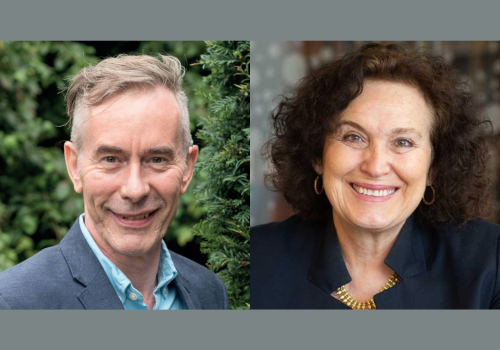
Ian Shipsey completed his PhD at the University of Edinburgh in 1986, working on the NA31 experiment at CERN’s Super Proton Synchrotron. It was during his time at CERN that he met Daniela Bortoletto, a fellow physicist. Their collaboration extended across decades and institutions, leading to some of the most significant discoveries in modern particle physics.
The two moved to Syracuse University and later to Purdue University, where Bortoletto joined the Collider Detector at Fermilab (CDF) experiment, contributing to the 1995 discovery of the top quark. Both also worked on the CLEO experiment at Cornell, where Shipsey built the muon detector and led studies on charmed baryon and bottom quark decays. His work on CLEO-c provided high-precision measurements validating lattice Quantum Chromodynamics (QCD), advancing understanding of the strong force.
At Purdue, they joined CERN’s Compact Muon Solenoid (CMS) experiment at the Large Hadron Collider. Bortoletto contributed to the development of silicon detectors, while Shipsey worked on constructing silicon cameras for the detector. Their contributions were instrumental in the 2012 discovery of the Higgs boson, revealing the mechanism by which elementary particles acquire mass. They later continued Higgs boson studies and silicon detector development as part of Oxford’s ATLAS group.
Since 2018, Bortoletto has served as Head of the Particle Physics sub-department at the University of Oxford, while Shipsey was Head of the Department of Physics until his passing in 2024. Their long and productive careers spanned many groundbreaking discoveries, but these highlights capture their incredible impact on the field of particle physics.
Gabriela González and Jorge Pullin: detecting Gravitational Waves
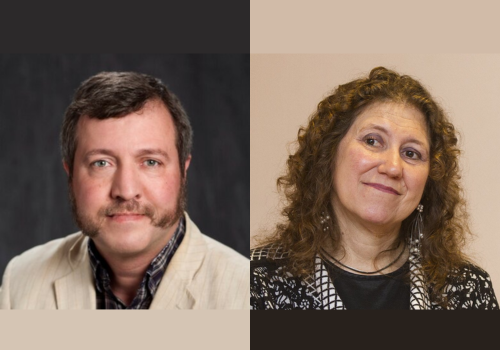
Gabriela González and Jorge Pullin’s partnership exemplifies how love and science can intertwine, even in the demanding world of modern physics. Their story began in Córdoba, Argentina, in the late 1980s, when they met at a physics conference. At the time, González was an undergraduate student exploring her passion for gravitational waves, while Pullin was already making strides in gravitational physics. Their shared interest in the mysteries of the universe led them both to Syracuse University in the United States, where González pursued her Ph.D., and Pullin worked as a postdoctoral researcher.
Over the years, the two became pivotal figures in the field of gravitational wave research. González, who served as spokesperson for the LIGO Scientific Collaboration, was instrumental in the groundbreaking 2015 detection of gravitational waves, a discovery that confirmed a century-old prediction by Einstein and revolutionized our understanding of the cosmos. Pullin, an expert in quantum gravity and black hole collisions, made significant theoretical contributions that underpin this transformative work.
Their journey was not without challenges. As academics with demanding careers, they faced the “two-body problem,” a familiar struggle for couples in science who often find themselves at different institutions. Their experience was highlighted in the 2001 Physics World article, “Love and the Two-Body Problem,” which explored how scientific couples balance professional ambitions and personal lives. Eventually, they found a shared academic home at Louisiana State University, where they continue to collaborate and mentor future generations of physicists.
These remarkable couples remind us that science, at its heart, is a human endeavor. Their stories show that partnerships grounded in love and shared purpose can drive progress, inspire innovation, and illuminate the mysteries of the universe. This Valentine’s Day, let’s celebrate the power of collaboration and the enduring legacy of these extraordinary physicist couples.
